Part to Play
Design Studio Instructor: Devyn WeiserDesign Team: Melanie Alcorn, Amanda Dellevigne, Qi Jia, and Priscila Vialpando
Rather than creating new forms, Part to Play challenged students to work from an existing kit of parts to develop syntax and composition. Our project explored James Stirling’s Wallraf-Richartz museum proposal in Cologne, Germany. The compositional strategy uses the double in multiple ways. In plan, his proposal uses the railroad tracks which divide the site as a line of symmetry. The forms are doubled in the positive and negative, for example the existing church is doubled through excavation in the ground. In our project we implemented similar mirroring in plan as well as the positive/negative shifts in elevation to create new proposals for the same site. In our combinations rather than a similar composition the mirror twin is an alternative view of the same geometry. Our method uses a feedback loop to apply graphical information onto the geometry to create tension between differing abstracted views of a single composition.








Ground: The outline figure described new sectional ground conditions through depression and extrusion. The forms responded to these new conditions in various ways inclusing sinking, embedding, cantilevering and elevating.





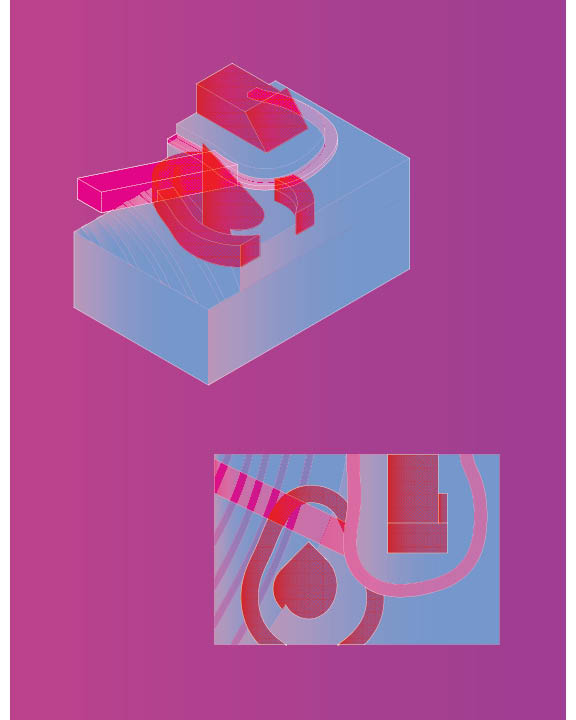


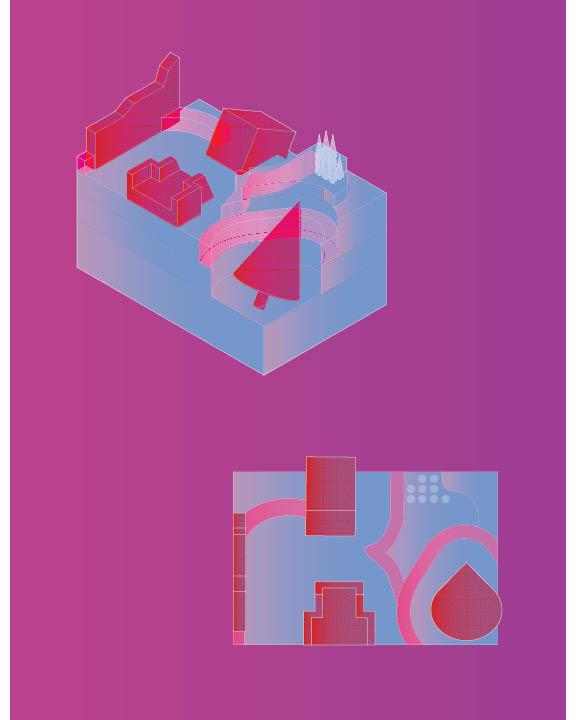

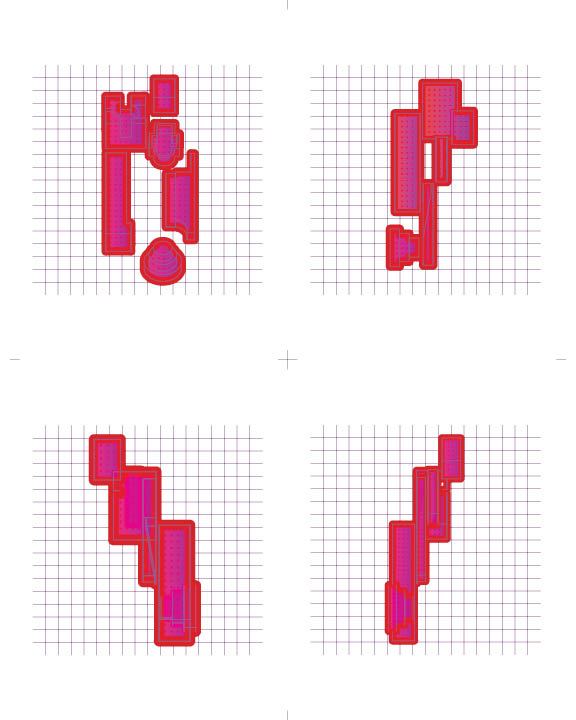

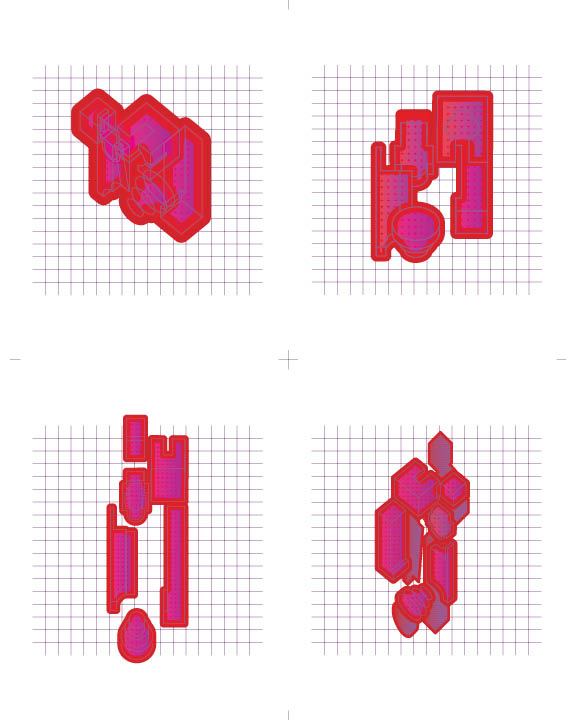




Matrix: Each White Diagram presents a different view of our an initial composition using James Stirling’s parts. From these views we selected four ideas about composition: linear, courtyard, puzzle, and random. In each combo (Pink Diagrams) the right side is the “plan” view and the mirror twin cycles through various view options. Linework: (Purple Diagrams) the outline figure was swapped and recombined with the original to explore the relationship between the outline figure and the objects, whether the forms are tightly or loosely contained, individual or collected.
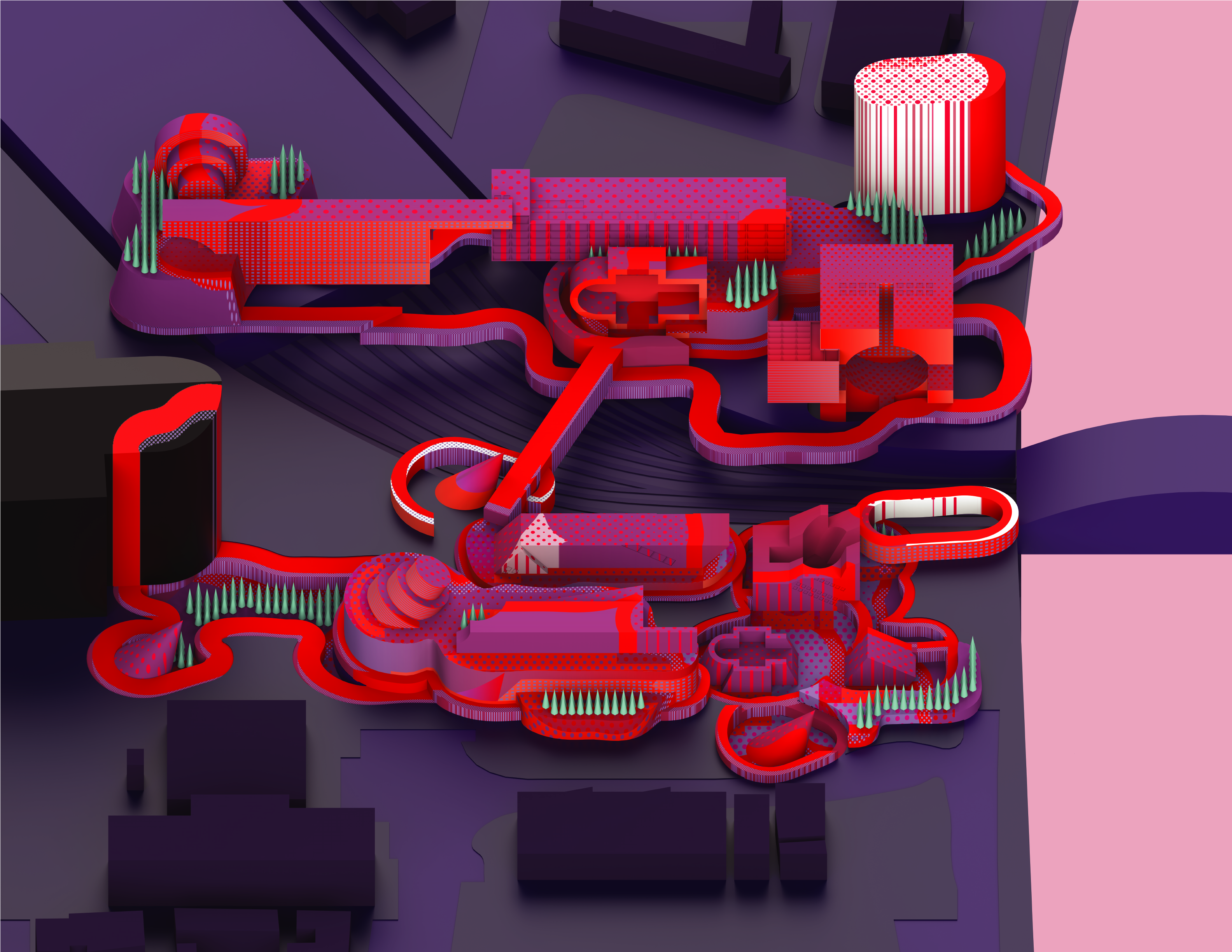
Sited: By swapping the outline figure from one view to another we explored figure, form and background. This swap created a new relationship between form and figure where objects move between inside and outside the container. The outline figure and graphic overlay describes new ground conditions through depression, elevation and thickening.